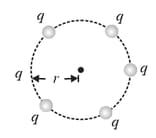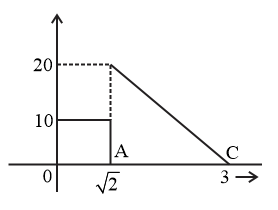B M Sharma Solutions for Chapter: Electric Potential, Exercise 1: DPP
B M Sharma Physics Solutions for Exercise - B M Sharma Solutions for Chapter: Electric Potential, Exercise 1: DPP
Attempt the free practice questions on Chapter 3: Electric Potential, Exercise 1: DPP with hints and solutions to strengthen your understanding. Chapterwise/Topicwise Daily Practice Problems (DPP) Electrostatics and Current Electricity JEE Main & Advanced solutions are prepared by Experienced Embibe Experts.
Questions from B M Sharma Solutions for Chapter: Electric Potential, Exercise 1: DPP with Hints & Solutions
Three charges , and are located at the vertices of an equilateral triangle. At the centre of the triangle.
Two electric charges and are placed apart in the air. There will be a point on the line joining these charges and outside the region between them, at which the electric potential is zero. The distance of from charge is
A spherical conductor of radius is charged to a potential of . It is now placed inside another hollow spherical conductor of radius . Calculate the potential to which the bigger sphere would be raised.
Two point charges and are placed at points and respectively with . Find the work done by external force in displacing the charge from to where , angle and, .
In the rectangle, shown below, the two corners have charges and . The work done in moving a charge from to is (take )

A charge and another charge are kept at two points and respectively. Keeping the charge fixed at , the charge at is moved to another point such that, forms an equilateral triangle of side . The net work done in moving the charge is
A point charge is surrounded symmetrically by six identical charges at distance as shown in the figure. How much work is done by the forces of electrostatic repulsion when the point charge at the centre is removed at infinity?

An electric field whose direction radially outward varies as distance from the origin as shown in the graph. is taken as positive if its direction is away from the origin. Then the work done by the electric field on a charge if it is taken from to is

